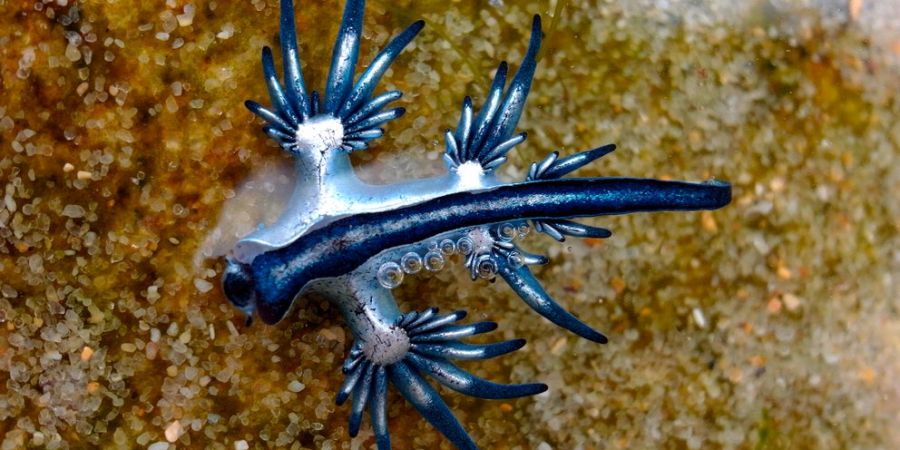

On May 2, Hunter Lane, a seven-year-old boy from Mesa, Arizona, was walking along a beach in Padre Island National Seashore when he discovered a strange marine creature that caught his eye.
"Hunter loves marine animals and thought he had found a blue button jellyfish , " explained the boy's father, Trey Lane, in statements to CNN .
That living being seemed from another world, and encouraged by the discovery, they continued walking along the coast; in a matter of a few minutes, they found three other identical specimens.
"He told me he had discovered a new species," joked the father, who said that he had spent 30 years spending the summer by the sea, and had never seen anything like it.
Alerting park authorities to the unusual capture, experts were shocked. They weren't looking at a new species, but it was certainly a "rare find" and unusual. It was a Blue Dragon, or Glaucus Atlanticus , a type of sea slug that has a very dangerous sting.
Although not the size of the lavish mythological creature or spitting fire from its mouth, the Glaucus Atlanticus, which only grows between three and four centimeters, has a relentless defensive technique , thanks to the small blue jellyfish it eats.
According to the park's biologists, after swallowing its prey, the Blue Dragon does not digest the stinging cells of the jellyfish , but stores them in the intestine and sends them from there to its feathers, or "fingers", to be able to use them in the future and thus protect yourself from possible attacks.
"Blue dragons are very small, but don't let their size fool you, they have a defense worthy of the dragon name," explained those responsible for the park through their Facebook page.
“They are predators of the blue jellyfish. After eating, they move the jellyfish's stinging cells to the end of their "fingers." Since they can concentrate the stinging cells together, their sting can be more painful than that of a jellyfish! So if you see a dragon in the park, be surprised because it is a rare find, but also keep your distance ”, they warned through the statement
This marine species of poisonous sting, which it uses against anyone who bothers it, prefers temperate and tropical waters , and commonly inhabits the Atlantic, Pacific and Indian Oceans. Being a nudibranch, it loses its shell shortly after being born.
Its unquestionable beauty resembles a mythological dragon, and its blue color allows it to camouflage itself in the water and hide from its predators, such as fish and birds. In addition, they are carried away by winds and currents, and are rarely seen by humans.
“Instead of digesting the stinging cells [of the jellyfish] they store them outside their body. They are really rare. They float on their backs and move using currents, ”explains Griffith University marine invertebrate expert Kylie Pitt.
It is not yet clear why the species landed on the Texas coast, since its presence is unprecedented. As Jamie Kennedy, a spokeswoman for the park, told CNN , during her two years working there she had never known of the presence of any specimen on South Padre Island. In your opinion, it could be a group of blue dragons that is approaching the shore.








